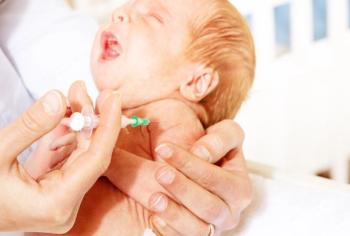
Young Man With Knee Problems After a Judo Injury
A 23-year-old man complains of looseness, clicking, and intermittent soreness in his right knee.In addition, the knee locks for short periods, and he has an occasional shooting pain up his rightthigh that causes the knee to buckle when he is walking. These symptoms have occurred intermittentlyover the past year, along with periods when the knee functions normally.
WHAT IS YOUR PRESUMPTIVE DIAGNOSIS AT THIS POINT?A. Meniscal tear.B. Anterior cruciate ligament tear.C. Patellar femoral tracking problems.D. Tibial plateau fracture.THE CONSULTANT'S CHOICE
Some of this patient's history and symptoms are classicfor patellar femoral tracking problems (PFTP)(choice C). Exacerbation of symptoms with prolongedflexion of the knee is typical. Mild swelling, crepitus, buckling,and locking are all characteristic of PFTP. Bucklingoccurs in PFTP when the patient is walking (as it did inthis man) or climbing stairs. The buckling associated withthe anterior cruciate ligament occurs when the patient isturning. The knee-locking experienced by patients withPFTP is a catching sensation and can easily be reduced,as it was in this man. The locking associated with a loosebody or meniscal pathology is more difficult to reduce andat times cannot be reduced.Pathophysiology of PFTP: The major function of thepatella is to increase the extensor strength of the quadricepsmuscle and evenly transmit forces to the underlyingbone. It does this by holding the quadriceps tendon awayfrom the distal end of the femur, which improves theangle between it and the tibial tuberosity and increases itsleverage. The patella changes position at different degreesof knee flexion. At full extension, the patella sits lateral tothe patellar sulcus of the femur, which is located superiorto the medial and lateral femoral condyles. As flexion increases,different portions of the patella come into contactwith different portions of the patellar sulcus.The vastus medialis (VM) is divided functionally into2 parts: the vastus medialis longus (VML) fibers aid inknee extension, and the vastus medialis obliquus (VMO)fibers keep the patella centered in the patellar sulcus. Thisability to keep the patella centered is decreased when theVMO decreases in strength. A 50% decrease in the tension/strength of the VMO results in a 5-mm displacementof the patella laterally.1 Such displacement places increasedpressure on the lateral portions of the patellar sulcus; as aresult, degenerative changes occur. This patient's initialtrauma probably caused some type of acute intra-articularinjury that predisposed him to this kind of imbalance betweenmedial and lateral quadriceps muscle forces. Suchimbalance is one of the major causes of PFTP2 and is mostlikely the cause of this patient's symptoms.However, an anterior cruciate ligament (ACL) tear(choice B) and a meniscal tear (choice A) are also possiblediagnoses. (A tibial plateau fracture [choice D] ismore likely to be associated with acute trauma.) The historyof a twisting injury followed by immediate swellingsuggests a tear of the ACL or the medial collateral ligament.Acute meniscal injuries can also occur as a result oftwisting, and there is an increased risk of meniscal injuryin knees with an ACL deficiency. It is also possible thatmore than one problem is present. The physical examinationcan help rule out an ACL or meniscal tear.WHICH OF THE FOLLOWING WOULD YOU DO NOW?A. Perform a patellar push test.
B. Perform a Lachman test to evaluate fordeficiency of the ACL.
C. Perform a McMurray test to evaluate formeniscal tears.
D. Observe and palpate the medial area of thequadriceps muscle to evaluate for VM atrophy.
E. Apply varus and valgus stress to the kneejoint to evaluate for medial and lateral collateralligament instability.
F. All of the above.
THE CONSULTANT'S CHOICE
A thorough examination of the knee is important atthis point. Thus, all of the tests listed (choice F) should beperformed.Examination results. No effusion is noted. Observationand palpation reveal marked atrophy of the VM portion of the quadriceps muscle. Figure 1 shows the areawhere this atrophy is typically noted. Application of varusand valgus stress to the knee joint (E) reveals no instability.The Lachman test for deficiency of the ACL (choiceB) reveals good end points and no weakness. Results of ajoint line examination and of a McMurray test for meniscaltears (choice C) are negative. Keep in mind, however,that none of these maneuvers are 100% specific or sensitive,and that their accuracy depends on the skill of theexaminer.The patellar push test (choice A) is performed byhaving the patient extend the knee fully while the examinerpushes the patella toward the toes and into the articularsurface of the trochlea; the patient is then asked tocontract the quadriceps muscle (Figure 2). In this patient,the maneuver produces pain and crepitus. Crepitus alonedoes not constitute a positive test result for PFTP. However,reproduction of the patient's pain is considered a positiveresult.Thus, patellar femoral tracking syndrome seems themost likely diagnosis, given the patient's history, VM atrophy,and positive patellar push test. Although the historyof trauma raised suspicion of ligamentous or meniscal injury,the initial MRI scan and the physical examinationruled out these disorders.WHAT WOULD YOU DO NOW?A. Obtain an MRI scan of the right knee.B. Refer the patient back to the orthopedic surgeon.C. Inject the knee with corticosteroids.D. Teach the patient to perform VM strengthening exercises.THE CONSULTANT'S CHOICE
The best choice is D. The VM can be strengthenedby straight leg raises (Figure 3) and leg extensionsperformed through the last 45 degrees of extension (Figure4).It has been over a year since his initial injury, so it isreasonable to wait a few more weeks to assess how hissymptoms respond to the VM strengthening regimen. Ifhe has intra-articular damage in addition to PFTP, it willbecome obvious with regular performance of the prescribedexercises. An MRI scan (choice A) can always beobtained later if the exercises do not ameliorate his symptoms.Orthopedic referral (choice B) is not needed at thistime; however, if his condition does not improve and anMRI scan indicates intra-articular damage, a referral would then be appropriate. Corticosteroid injection (choice C) is not indicated.Outcome of this case. The patient was taught howto do VM strengthening exercises, and he has noticedsome improvement. He will also be evaluated by a physicaltherapist, and he will be followed closely to determinewhether complete recovery is achieved or further evaluationis needed.
References:
REFERENCES:
1.
McConnell J. The physical therapist’s approach to patellofemoral disorders.
Clin Sports Med.
2002;21:363-387.
2.
Hunter SC, Marascalco R, Hughston JC. Disruption of the vastus medialisobliquus with medial knee injuries.
Am J Sports Med
. 1983;11:427-431.
Newsletter
Enhance your clinical practice with the Patient Care newsletter, offering the latest evidence-based guidelines, diagnostic insights, and treatment strategies for primary care physicians.


















































































































































































































































































